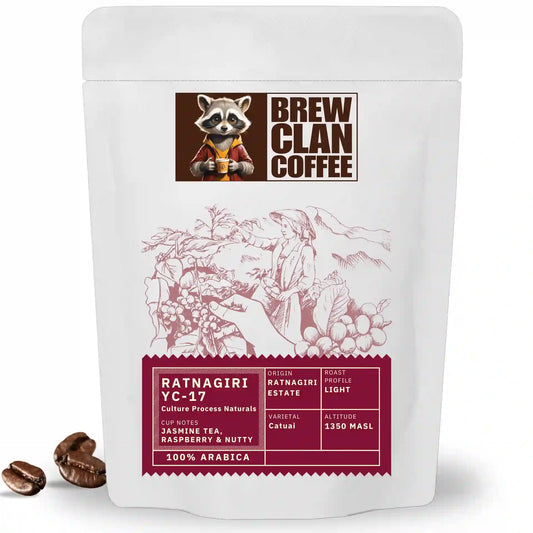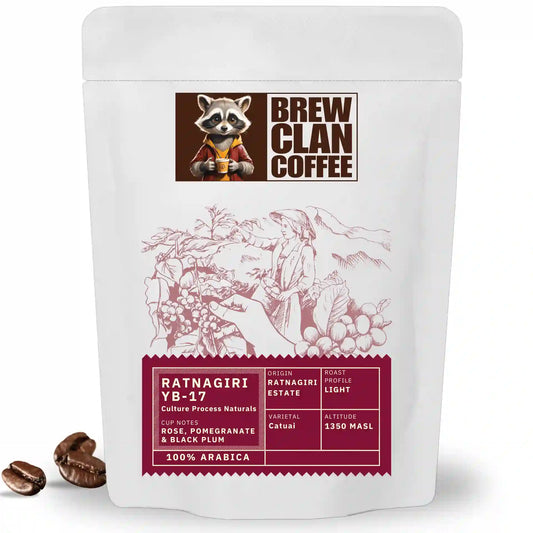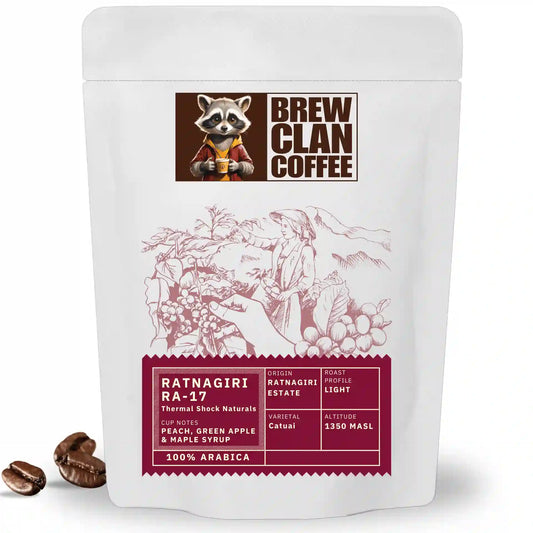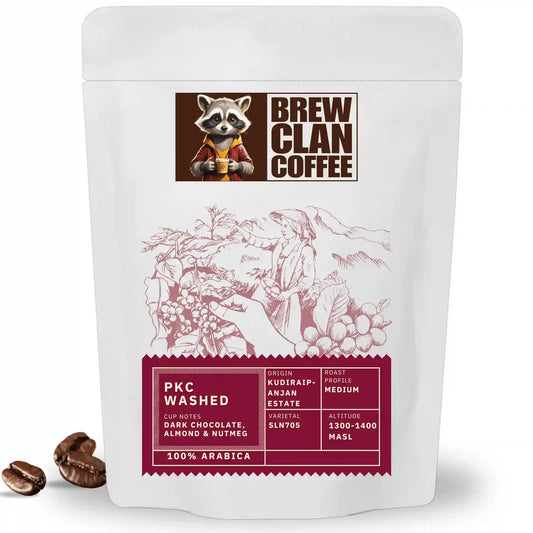
Common Brewing Mistakes That Ruin Good Beans
Share
Nothing’s worse than splurging on fresh, specialty-grade coffee, only for it to taste bitter, sour, or just plain dull when you brew it at home.
The truth is, even the best beans can end up disappointing if they’re brewed with common mistakes many coffee lovers don’t even realize they’re making.
The good news? Most of these brewing missteps are easy to fix once you know what to look for.
In this guide, we’ll break down the most frequent brewing mistakes that ruin good beans and show you simple, practical ways to avoid them.
Mastering just a few key techniques will unlock the full potential of your coffee and make every cup taste like it came from your favorite café.
Using the Wrong Grind Size
Grind size is one of the biggest factors that can make or break your coffee. It determines how quickly water extracts flavors from the grounds, too fine or too coarse, and you’ll end up with a disappointing cup.
Too Fine = Bitter & Over-Extracted
Water spends too long passing through coffee that’s ground too fine, pulling out harsh, bitter flavors.
Too Coarse = Sour & Under-Extracted
Water rushes through grounds that are too chunky, leaving you with weak, sour-tasting coffee.
Grind Size Guide for Popular Methods:
- Espresso → Very fine, like powdered sugar
- Pour-Over (V60, Chemex) → Medium-fine, like table salt
- Drip Coffee Makers → Medium, like beach sand
- French Press → Coarse, like kosher salt

💡 Tip: Invest in a burr grinder if possible. It creates consistent grind sizes, unlike blade grinders which produce uneven particles that cause uneven extraction.
Incorrect Water Temperature
Water temperature directly affects how flavors are extracted from coffee grounds, and it’s one of the easiest mistakes to make.
Too Hot = Bitter, Over-Extracted Coffee
Water above ~96°C scalds the grounds, pulling out harsh, burnt flavors.
Too Cool = Sour, Under-Extracted Coffee
Water below ~90°C doesn’t extract enough, leaving your coffee tasting weak, sour, or flat.
Ideal Brewing Range:
For most methods, aim for 92–96°C (197–205°F). This sweet spot extracts balanced, complex flavors without scorching or under-extracting your beans.

💡 Quick Test: If you don’t have a thermometer, let your kettle sit 30 seconds after boiling before pouring, it should drop into the ideal range.
Poor Coffee-to-Water Ratio
Using too much or too little coffee can throw off your brew’s balance, no matter how fresh your beans or fancy your gear.
Too Much Coffee = Overly Strong & Bitter
Overpowers subtle flavors and can taste harsh or muddy.
Too Little Coffee = Weak & Watery
Lacks body, complexity, and satisfying flavor.
Go-To Brewing Ratios:
- Pour-Over & Drip → 1:16 (1 gram coffee to 16 grams water)
- French Press → 1:15 for richer body
- Espresso → 1:2 (e.g., 18 grams coffee for ~36 grams espresso)

💡 Tip: Weigh both your coffee and water with a scale for consistency. Scoops vary in volume, but grams don’t lie.
Bad Pouring Technique
Even if you’ve nailed your grind and ratio, a poor pouring method can ruin your cup by causing uneven extraction. This is especially true for pour-over brewing, where water flow directly shapes the flavor.
Too Fast or Aggressive Pouring
Causes channeling, water races through some grounds and bypasses others, leading to sour or bitter spots.
Uneven Saturation
Dumping water in one area leaves grounds elsewhere dry, resulting in weak or unbalanced brews.
How to Pour Like a Pro:
- Start with a gentle bloom pour to wet all grounds evenly and let gases escape.
- Continue pouring in slow, steady, circular motions, keeping the water level consistent without splashing.
- Pour over the center and spiral outward, avoiding the filter edges to prevent bypassing the coffee bed.

💡 Bonus Tip: A gooseneck kettle gives you the precision to control flow and direction, a game-changer for pour-over.
Stale or Improperly Stored Beans
Even perfect brewing can’t save coffee that’s gone stale. Freshness is key: once roasted, coffee beans start losing flavor as they’re exposed to air, moisture, light, and heat.
Stale Beans = Flat, Lifeless Coffee
Aged or oxidized beans taste dull, woody, or cardboard-like, with muted aromas.
Poor Storage = Faster Flavor Loss
Keeping beans in open containers or clear jars accelerates staling, even if they look good on your counter.
How to Keep Beans Fresh:
- Buy freshly roasted, specialty-grade coffee in small batches you’ll use within 2–4 weeks.
- Store beans in an opaque, resealable bag or airtight container away from light, heat, and moisture.
- Avoid frequent exposure to air; reseal your bag tightly after each use.

💡 Try BrewClan’s Specialty Coffee, shipped in premium resealable bags to help keep your beans fresher for longer.
Dirty Equipment
Brewing gear that isn’t cleaned regularly can ruin even the best beans. Residual coffee oils and fine particles build up in your grinder, brewer, or kettle, leading to off-flavors.
Residue = Bitter, Rancid Tastes
Old oils oxidize and turn stale, imparting unpleasant bitterness and masking your coffee’s natural flavors.
Hidden Mold or Bacteria
Moist environments inside equipment like French presses or drip baskets can harbor mold or bacteria, affecting taste and health.
Cleaning Tips:
- Grinders → Brush or vacuum out old grounds weekly; deep-clean burrs monthly.
- Brewing Devices → Wash removable parts with mild soap and rinse thoroughly after every use.
- Kettles → Descale electric kettles with a water-vinegar solution monthly if you have hard water.
💡 Remember: Clean equipment doesn’t just protect flavor, it extends the life of your gear, saving money over time.
Skipping the Bloom
If you rush straight into your pour without blooming, you’re missing a crucial step that can dramatically affect your coffee’s taste.
What is Blooming?
It’s the initial pour where hot water hits fresh coffee grounds, releasing trapped carbon dioxide (CO₂) produced during roasting.
Why It Matters
If CO₂ isn’t released, it repels brewing water, causing uneven extraction and sour or flat flavors. Blooming helps water fully saturate the grounds for balanced extraction.
How to Bloom Properly:
- Pour just enough hot water (2–3x the coffee’s weight) to wet all grounds evenly.
- Let it sit for 30–45 seconds, you’ll see bubbling as gases escape.
- After the bloom settles, continue your main pour.

💡 Always bloom with fresh, specialty coffee beans like those from BrewClan, stale supermarket coffee won’t release much gas, so skipping the bloom won’t make a difference.
Conclusion
Great coffee isn’t just about buying quality beans, it’s about brewing them with care. By avoiding these common mistakes, you can unlock the full potential of your specialty coffee and enjoy cups that are rich, balanced, and bursting with flavor every time.
Take the time to dial in your grind, water temperature, ratios, and technique, and you’ll be amazed at how much better your coffee tastes.
And if you’re looking for fresh, small-batch roasted beans that set you up for success right from the start, give BrewClan’s specialty coffees a try, experience them once, and you’ll taste why freshness truly matters.
Explore BrewClan Specialty Coffee →
FAQs - Frequently Asked Questions
1. Why does my coffee taste bitter?
Common causes include too fine a grind, overly hot water, or too much coffee in your brew ratio, all leading to over-extraction.
2. Why is my coffee sour or weak?
Using water that’s too cool, grinding too coarse, or using too little coffee can lead to under-extraction and sour or flat flavors.
3. How important is blooming coffee?
Very important! Blooming releases trapped CO₂ from fresh beans, allowing even water penetration and balanced extraction.
4. How often should I clean my coffee gear?
Rinse brewing equipment after every use, wipe grinders weekly, and deep-clean or descale monthly to prevent off-flavors.
5. Does grind size really affect taste?
Yes, grind size directly affects extraction speed. Too fine causes bitterness; too coarse leads to sour, under-extracted coffee.
6. Can old coffee beans ruin my brew?
Absolutely. Stale beans lose aromatic compounds and taste flat or cardboard-like, no matter how well you brew them.




